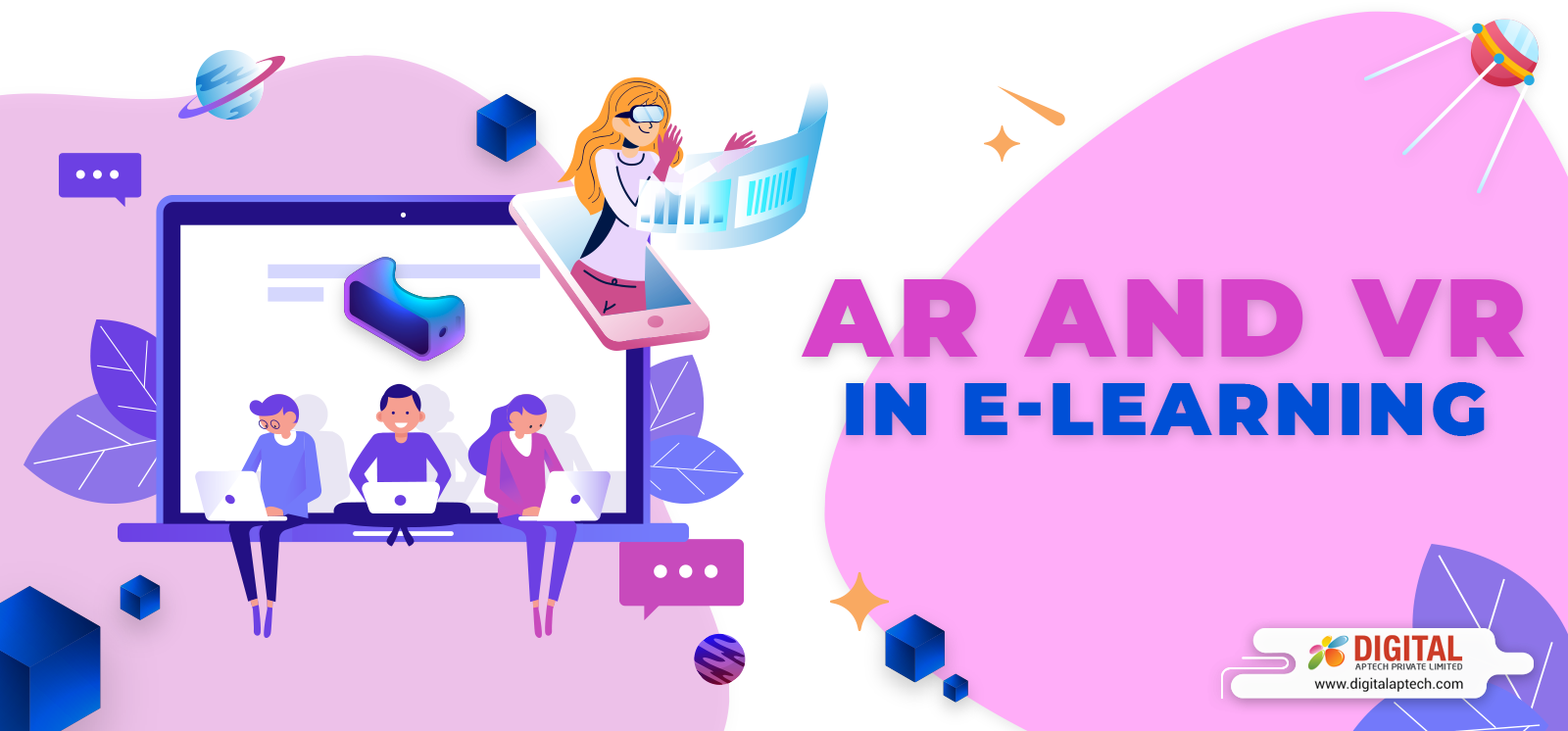












There’s been a lot of buzz around augmented reality (AR) and virtual reality (VR) and how they can revolutionize e-learning. But the question is, can they really contribute to e-learning? Can they actually make the learners improve their skills and performance or help them remember more? In this blog, we’ll discuss everything about the application and the future of AR and VR in the field of e-learning. But before we move forward, let’s give you a clear idea about what AR and VR actually are.
Augmented Reality, commonly known as AR, adds or overlays imagery or digital elements to a live view. Examples of AR include the Pokemon Go game and Snapchat lenses.
Virtual Reality, on the other hand, immerses you in a replicated world, for example, video games and flight simulations by simulating your presence in the real world or completely shutting the physical world.
In order to experience VR, you’ll need an opaque VR headset and for AR, you’ll need clear lenses.
While these technologies are primarily used in the gaming and entertainment industries, they have great potential to be used in the e-learning industry. This industry is growing rapidly and improvements can be seen in the voice recognition apps, making it easier to learn remotely. If reports are to be believed, the global market of AR and VR educational software is expected to go a long way and the revenue is forecasted to grow $700 million by the year 2025. Now, that’s a huge amount of money!
Applications of AR and VR in E-learning
1. Digital surgery

The healthcare industry has already started making use of AR and VR for surgery planning as well as training. And the result that it provides is simply awesome, sometimes, a lot better than the conventional methods of learning. There is a company that builds immersive touch virtual reality e-learning platforms for surgical planning and training. And those platforms are used in more than 20 medical institutions and universities. Another AR app is BodyMap. This is a virtual reality human anatomy learning solution with the help of which medical students and professionals can have an interactive and realistic learning experience.
2. Use AR and VR in the classroom

In this technologically advanced world, students can now actually learn and experience the world outside without leaving their classroom. DiscoveryVR is an app with the help of which they get to learn various cultures and study different animals. In fact, they can even visit the top museums of the world with Boulevard, an immersive VR museum app. And not to mention the Google Expeditions app that has the ability to transform a boring classroom into an adventurous and exciting place students would love to explore! To experience all these wonders, all a person needs in the classroom is Google Cardboard along with a smartphone.
3. Astronaut training

NASA is always a step ahead in using AR, VR and Mixed Reality (MR) to provide training to their astronauts. They make use of all types of real-time motion simulators and graphics in their Virtual Reality Laboratory to teach their astronauts how to operate humanoid robots and rovers. Did you know that they have even virtually sent astronauts to Mars? Yes, to make them familiar with the environment of Mars and make sure they do well when they go for Mars expeditions in real life! Cool, isn’t it?
4. Army training

It’s been a long time that the US Army’s been applying gamification and making use of virtual training. Navy, army and air force are using VR and AR for combat training, weaponry, virtual boot camps, flight simulations and medical training in the battlefield. At present, Microsoft has got a 480 million dollars contract for supplying 100,000 Hololens headsets to the US Army!
5. Immersive driving

With VR, you can get better at driving! Did you know that? Well, TeenDrive365 was launched by Toyota, back in the year 2015 and was named the “distracted driving simulator”. It was designed mainly to train new and young drivers so that they can cope with distractions in a safe environment. Another example of VR in immersive driving is VR Driver Training that trains both professional and non-professional drivers.
Benefits of AR and VR in Education

AR and VR can benefit the education industry in the following ways:
If the students wear VR helmets while learning in the classroom, it’ll make the learning process a lot simpler, making the students remember everything faster.
VR learning makes learning exciting, thereby encouraging the students to learn more and keep their attention intact.
In a virtual environment, students can do various physical exercises, assemble planes and do much more – all in a completely safe virtual environment.
Using virtual reality and augmented reality in e-learning can be a great way to increase student engagement, safety as well as personalization. This is why, more and more learning institutions and companies are starting to implement AR and VR in their training programs. Do you want to implement it too? Digital Aptech can help. Contact us!
